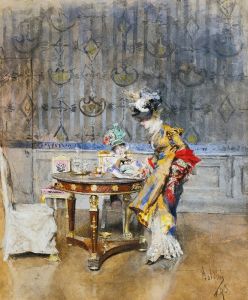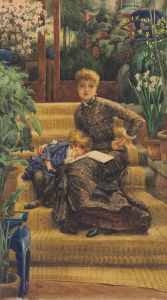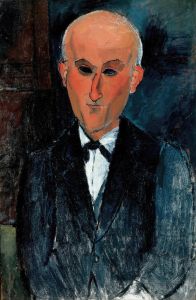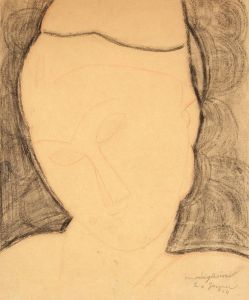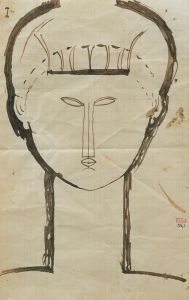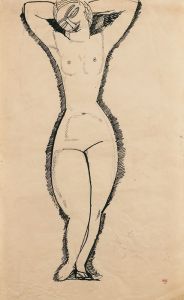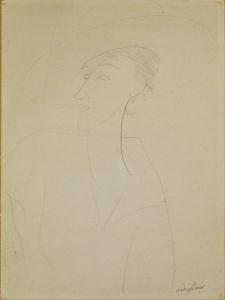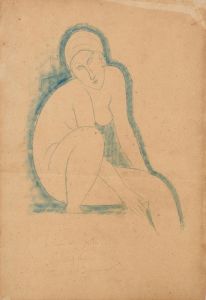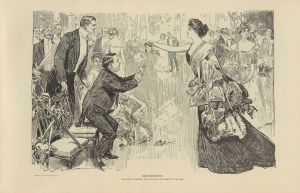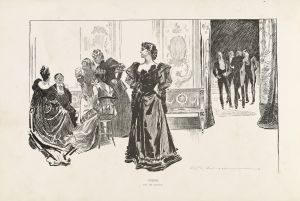
La Jeune bonne
A hand-painted replica of Amedeo Modigliani’s masterpiece La Jeune bonne, meticulously crafted by professional artists to capture the true essence of the original. Each piece is created with museum-quality canvas and rare mineral pigments, carefully painted by experienced artists with delicate brushstrokes and rich, layered colors to perfectly recreate the texture of the original artwork. Unlike machine-printed reproductions, this hand-painted version brings the painting to life, infused with the artist’s emotions and skill in every stroke. Whether for personal collection or home decoration, it instantly elevates the artistic atmosphere of any space.
"La Jeune bonne" (The Young Maid) is a painting by the Italian artist Amedeo Modigliani, created in 1918. Modigliani, known for his distinctive style characterized by elongated forms and mask-like faces, was a prominent figure in the early 20th-century art scene. His works are often associated with the Expressionist and Modernist movements.
The painting "La Jeune bonne" depicts a young maid, a subject that reflects Modigliani's interest in portraying everyday people with a sense of dignity and individuality. The young maid is rendered with the artist's signature elongated neck and simplified, yet expressive facial features. The background is relatively plain, which serves to highlight the figure of the maid herself.
Modigliani's use of color in "La Jeune bonne" is notable for its muted palette, which includes shades of brown, beige, and ochre. This subdued color scheme is typical of many of his portraits and contributes to the overall sense of calm and introspection that characterizes his work. The brushwork is smooth and the lines are clean, emphasizing the elegance and grace of the subject.
Amedeo Modigliani was born in Livorno, Italy, in 1884 and moved to Paris in 1906, where he became part of the vibrant artistic community in Montmartre and later Montparnasse. His circle included other notable artists such as Pablo Picasso, Constantin Brâncuși, and Chaim Soutine. Despite his connections and the eventual recognition of his talent, Modigliani struggled with poverty and health issues throughout his life. He suffered from tuberculosis, which ultimately led to his premature death in 1920 at the age of 35.
"La Jeune bonne" was created during a particularly productive period in Modigliani's career. By 1918, he had developed his mature style and was focusing primarily on portraiture. This period also saw him creating some of his most famous works, including portraits of his friends, lovers, and patrons. The painting reflects his ability to capture the essence of his subjects with a few, well-placed lines and a keen sense of composition.
The painting is currently housed in the Musée de l'Orangerie in Paris, France, which is home to an impressive collection of Impressionist and Post-Impressionist works. The museum's collection includes several other pieces by Modigliani, providing a broader context for understanding his artistic development and contributions to modern art.
Modigliani's work, including "La Jeune bonne," continues to be celebrated for its unique blend of classical and modern elements. His portraits, in particular, are admired for their emotional depth and the way they convey the inner life of the subjects. "La Jeune bonne" stands as a testament to Modigliani's skill as a portraitist and his ability to elevate the ordinary to the extraordinary through his art.





